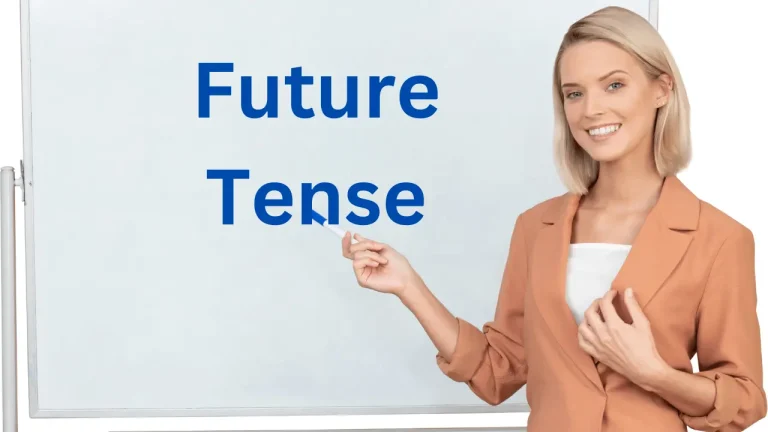Present Perfect Tense & How to Use It, With Example

Present Perfect Tense With Detail Explanation, Rules In the Form of Flow Chart
Buckle up yourself, because the present perfect tense is your ticket to weaving stories that transcend time itself. So, get ready to unravel the enigma of the present perfect tense with the help of different impactful example sentences and sprinkle some temporal magic into your writing. Also, it’s not wrong to say that the present perfect is used to indicate a link between the present and the past.
However, in this article, the meaning, definition, formula, structure and uses will be explained along with examples to help you understand better.
What is the Present Perfect Tense?
Present perfect tense used to indicate an action that is used to denote an action that is indefinite and still has its effect on the subject or object in the sentence.
Note: In this tense, we use helping verbs (has, have), and usually use 3rd form verbs.
- Has: We use it with singular subject (He, She, It, singular name).
- Have: We use it with a plural subject (I, They, You, We, plural name).
Use in Sentence:
Sub-categories of Sentences
The present perfect tense has been divided into 4 subcategories of sentences.
Now, let’s start to discuss these subcategories of sentences.
1. Assertive / Simple Sentence
Assertive / simple sentence contains at least one subject, form of verb, and object. On the other hand, we can say that those sentences which start with a subject are called simple or assertive sentences.
Note: This kind of sentence, we usually use helping verbs (has, have), 3rd form of verb.
- Has: We use it with singular subject (He, She, It, singular name).
- Have: We use it with a plural subject (I, They, You, We, plural name).
Use in Sentence:
2. Negative Sentence
Those sentences in which we use “not” or in which we do to refuse about something, these sentences are said to be negative sentences. Also, to make negative sentences, we use “not” before the verb.
Note: In this kind of sentence, we use Helping Verb (has not, have not) + 3rd form of verb.
- Has not: We use it with singular subject (He, She, It, singular name).
- Have not: We use it with a plural subject (I, They, You, We, plural name).
Use in Sentence:
3. Interrogative Sentence
Those sentences in which you ask something from people, friends, relatives, and even anybody or do ask a question to someone, so these sentences are said to be interrogative sentences. Also, to make interrogative sentences, we use helping verbs (has, have) at the beginning of the sentence.
Note: In this kind of sentence, we use helping verbs (has, have) at the beginning of sentence, 3rd form verbs, and question mark (?) at the end of the sentence.
- Has: We use it with singular subject (He, She, It, singular name).
- Have: We use it with a plural subject (I, They, You, We, plural name).
Use in Sentence:
4. Interrogative & Negative Sentence
Those sentences in which we ask questions with not or refuse from anyone, these sentences are called interrogative & negative sentences. Also, to make negative & interrogative sentence, we use helping verbs (is, am, are) at the beginning of sentence, (not) before 1st form verbs with ing, and question mark (?) at the end of the sentence.
Note: In this kind of sentence, we use helping verbs (has, have), not, 3rd form verbs, and question mark (?).
- Has: We use it with singular subject (He, She, It, singular name).
- Have: We use it with a plural subject (I, They, You, We, plural name).
Use in Sentence:
Structure of Sub-categories of Sentences
Also, take a look at the following table to understand how the general format in which the present indefinite tense behaves in the assertive/ simple, negative, interrogative, and Interrogative & Negative format.
| Name of Tense | Making Sentence Rule | Example Sentence |
|---|---|---|
| Assertive / Simple Sentence | Subject + Helping verb (has, have) +3rd form of verb + object. | He has completed his work. |
| Negative Sentence | Subject + Helping Verb(has not, have not) + 3rd form of verb + object. | They have not fulfilled their promise. |
| Interrogative Sentence | Helping Verb (has, have) +Subject + 3rd form of verb + object + ? | Have you sold their house? |
| Interrogative & Negative Sentence | Helping verb (has, have) + Subject + not + 3rd form of verb + object + ? | Has he not done anything for his children? |
Uses of Present Perfect Tense
There’re reasons or places where this kind of present tense is used which are given below.
- To describe an action that has just finished. For Example: 1. I have posted the letter. 2. She has kneaded flour.
- To express an action which is just over and the resulting state is still present.For Example:1. I have read the novel; you can discuss it with me. 2. He has passed the Intermediate Examination.
FAQs
Conclusion
Wrapping up the present perfect tense is like putting the cherry on top of your grammar sundae. It’s a versatile tool that adds a dash of sophistication to your sentences. So, next time you want to express an action that happened in the past but still has a connection to the present, the present perfect is your go-to wingman. It’s the grammar superhero that swoops in to save the day, making your communication clearer, more nuanced, and downright impressive.
Also, if you’ve faced any problem while reading this article, you can discuss it with us through the comments below. We’ll try our best to solve your problem in a short interval of time, so that you may understand them better. Also, thanks a lot from the depth of the heart for reading this article.






